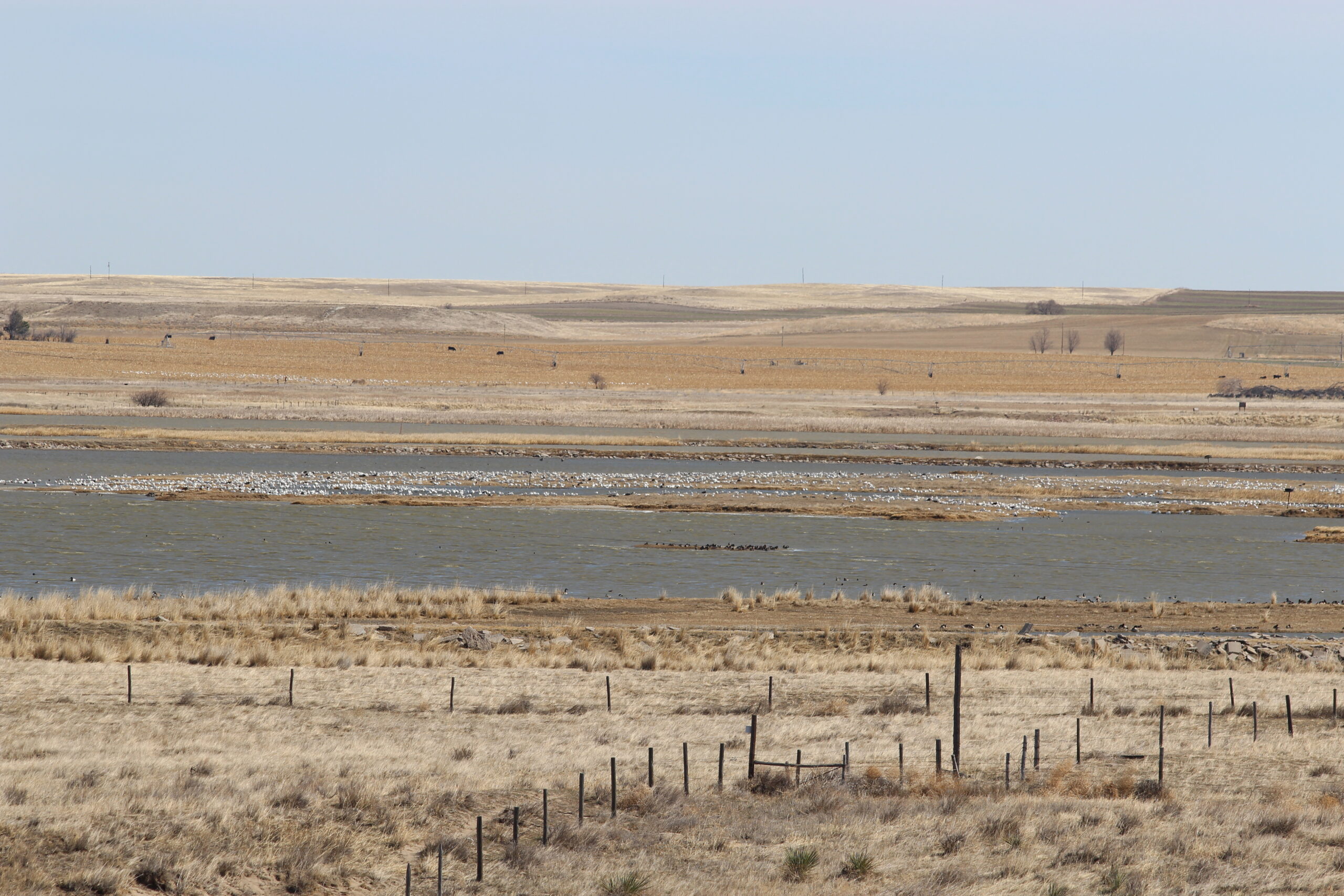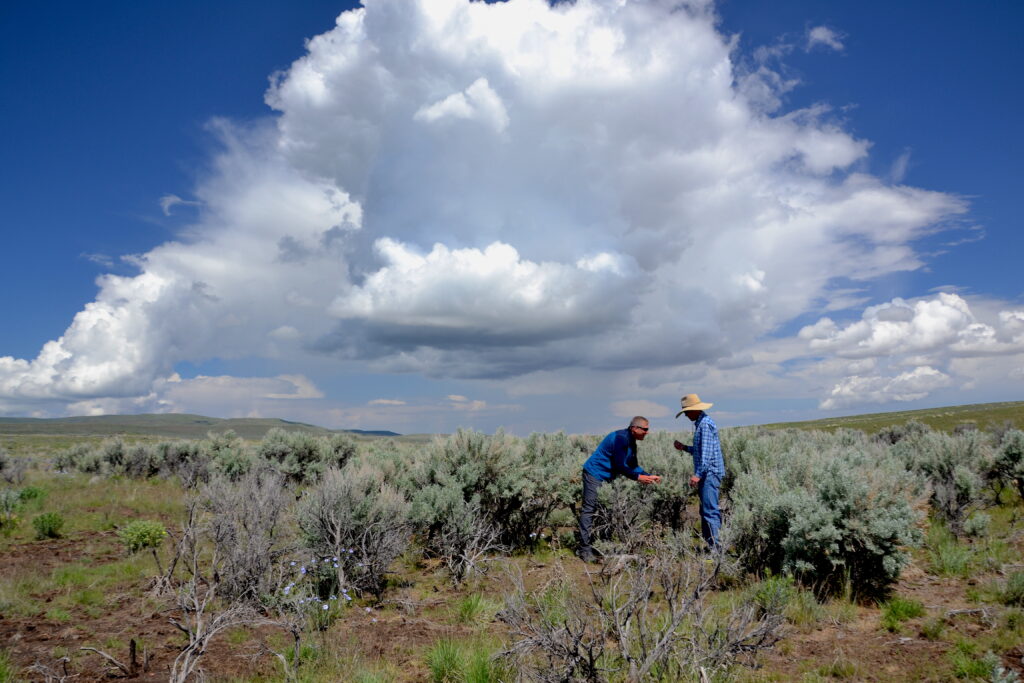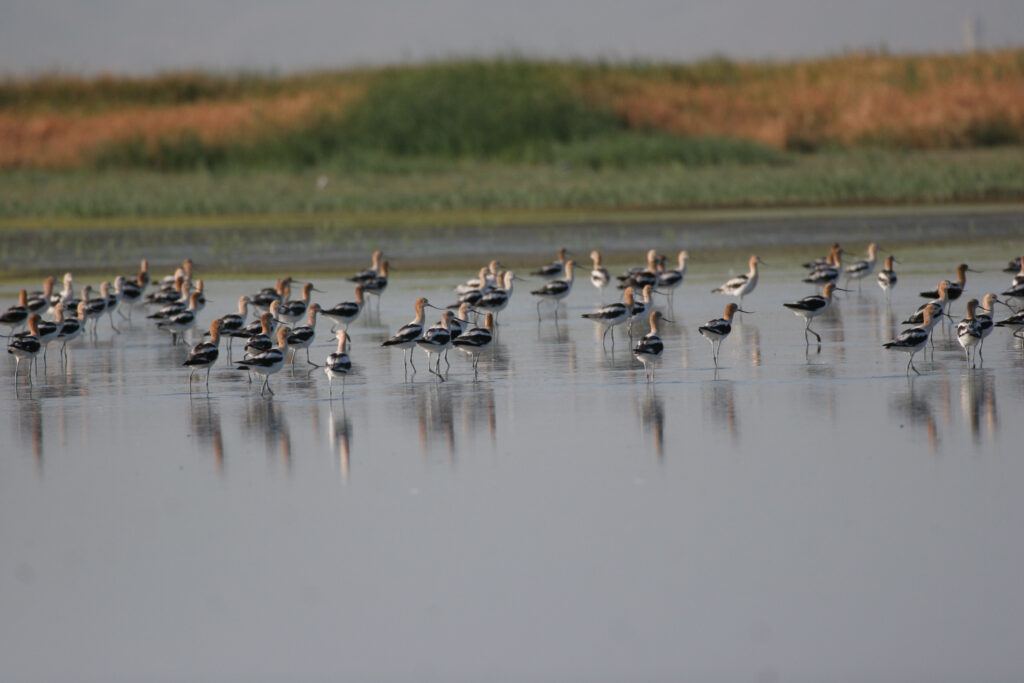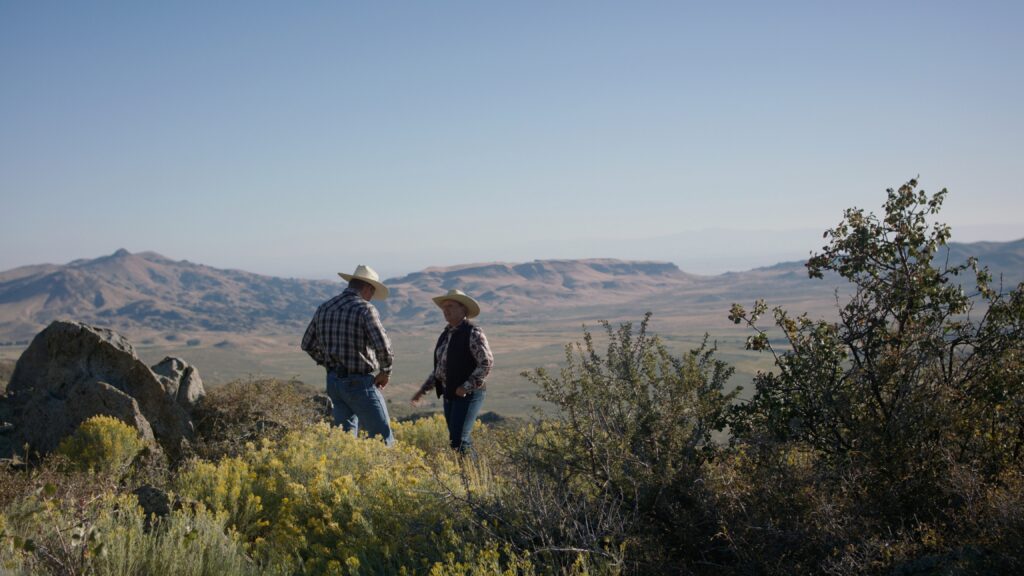By Steve Tessmann, Wyoming Game and Fish Staff Biologist and State Conservation Partnership Chair
The Goshen Hole is an unassuming group of wetlands on the southeast border of Wyoming and western Nebraska. No iconic snow capped mountains grace the skyline and your first impression might be that it is a seemingly uninteresting collection of shallow ponds lost on the edge of the Great Plains. Yet, this wetland complex comes to life during spring and fall, when it serves as a crucial hub for migrating birds. The Goshen Hole is significant in that it lies along a segment of the northbound migration where the next stopover sites are few and far between (see Fig. 1).
Migrating waterfowl, waterbirds, and numerous other avian species rely heavily upon this place to rest and refuel. At least 13 species of ducks and 19 species of waterbirds and shorebirds have been documented here. The Wyoming Game and Fish Department identified at least 46 vertebrate species of greatest conservation need that use the wetlands, riparian and riverine habitats of Goshen Hole. In fact, the region received one of the highest species diversity rankings in a wetland assessment study completed by The Nature Conservancy in Wyoming.
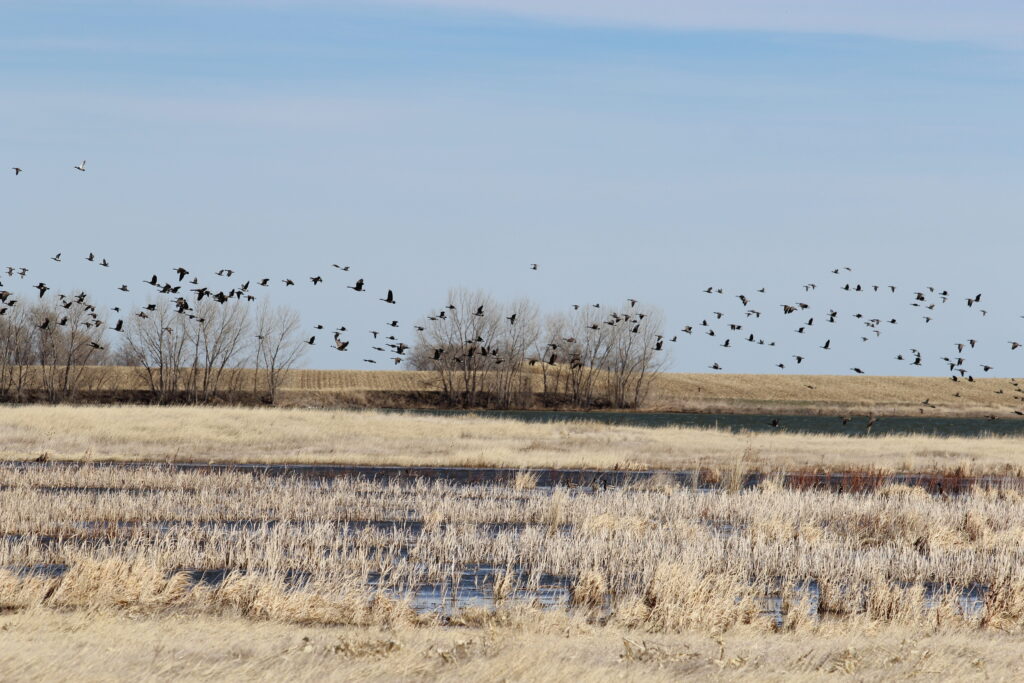
The Intermountain West Joint Venture has identified the areas of the Middle Rio Grande in New Mexico to the San Luis Valley and North Park in Colorado as ones of continental significance. This corridor of important habitats funnels large numbers of birds into the Goshen Hole region. Birds migrating north from these locations must traverse a significant distance to their final destinations. This makes the Goshen Hole one of a bird’s last meal opportunities as it heads to the prairie potholes in North Dakota or Canada.
The Goshen Hole Complex is also Wyoming’s most important waterfowl hunting location in terms of hunters, total harvest, and recreation days. The region has very high recreation value due to its proximity to Wyoming’s major population centers including Cheyenne, Laramie, Wheatland, and Torrington. Several agencies and organizations are involved in ongoing wetland and riparian habitat conservation activities within the Goshen Hole Complex. Those efforts include wetland construction and enhancement, outreach and technical assistance, easement purchases, and conservation incentives. In addition, the Goshen Hole is an extension of the Platte River system, which is a priority area for the Playa Lakes Joint Venture.
The primary purposes of the Goshen Hole regional plans are to describe the landscape and wetland resources of Goshen Hole, identify conservation partners, and outline specific objectives and strategies for managing and conserving wetlands within the Goshen Hole area. It’s a special site for both birds and people. Partners are hopeful that these plans for conserving wetland values will safeguard these unique and precious places into the future.
